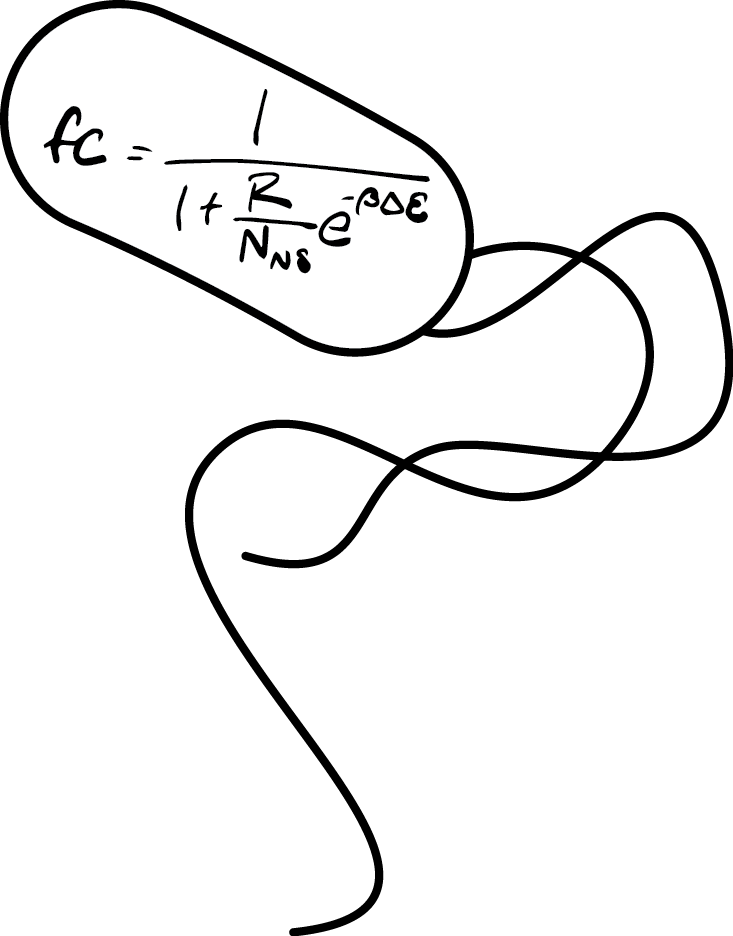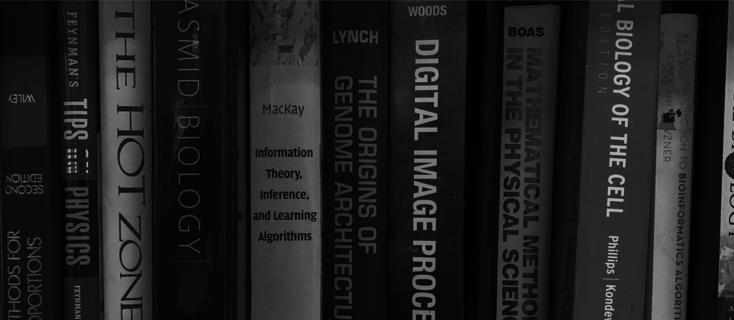Here you will find papers and vignettes mentioned in the class. These sections will be updated as the course progresses.
Vignettes
PBoC Vignette Library - This series of vignettes expands on topics we will cover in the course. Specific suggestions for vignettes to watch will be given during the course.
| Date | Topic |
|---|---|
| Mon. May 2 | 1. A feeling for the organismThis vignette introduces the goal of the course, nothing less than to develop a quantitative feeling for the nature of the living world. |
| Tue. May 3 | 2. All is flux: dynamics across scales in biology |
| Wed. May 4 | 3. Probability as the language of biology: from coin flips to diffusion and embryogenesis |
| Thur. May 5 | 4. The secret of life as defiance |
| Fri. May 6 | 5. Beyond the atoms: coarse-grained views of living matter |
In-Class Readings
Reading assignments
Cell Biology by the Numbers by Ron Milo and Rob Phillips. This book describes many of the estimates we will do in class and is a useful resource for finding key numbers that characterize biological phenomena.
Street-Fighting Mathematics by Sanjoy Mahajan. This book elaborates on the skills we will be honing throughout the week as we try to go from the precise calculating with which we are often taught to performing quick calculations largely driven by our intuition to get to rough estimates.
Physical Biology of the Cell by Rob Phillips, Jane Kondev, Julie Theriot, and Hernan G Garcia. This book elaborates on the many of the physical principles and mathematical methods and their application to biological systems.
Day 1 (May 2nd)
Ivory poaching and the rapid evolution of tusklessness in African elephants by Shane C Campbell-Staton, et al. Science 2021.
NIH Sequence Read Archive (SRA) Statistics by National Center for Biotechnology Information, National Institutes of Health. Statistics on the raw sequence submission in the Sequence Read Archive hosted on the National Center for Biotechnology Information website.
Human Impacts Database by Griffin Chure, Rachel Banks, Avi I Flamholz, Nicholas S Sarai, Mason Kamb, Ignacio Lopez-Gomez, Yinon M Bar-On, Ron Milo, and Rob Phillips. From water usage to land usage, the Human Impacts Database contains numbers that quantify the impacts of human presence on Earth.
Polymerases and the replisome: machines within machines by Tania A Baker and Stephen P Bell Cell 1998.
Molecular ‘vitalism’ by Marc Kirschner, et al. Cell 2000.
Fundamental limits on the rate of bacterial growth and their influence on proteomic composition by Nathan Belliveau, Griffin Chure, et al. Cell Systems 2021.
The quantitative and condition-dependent Escherichia coli proteome by Alexander Schmidt, et al. Nature Biotechnology 2016.
Torque-dependent remodeling of the bacterial flagellar motor by Navish Wadhwa, et al. PNAS 2019.
Day 2 (May 3rd)
More is different: broken symmetry and the nature of the heirarchical structure of science by P W Anderson Science 1972.
One at a time, live tracking of NGF axonal transport using quantum dots by Bianxiao Cui, et al. PNAS 2007.
Single-RNA counting reveals alternative modes of gene expression in yeast by Daniel Zenklusen, et al. Nat. Struc. Mol. Bio. 2008.
Kinesin-8 motors act cooperatively to mediate length-dependent microtubule depolymerization by Vladimir Varga, et al. Cell 2009.
Day 3 (May 4th)
Dynamics of the IFT machinery at the ciliary tip by Alexander Chien, et al. eLife 2017.
Day 4 (May 5th)
The great ideas of biology by Paul Nurse Clin Med JRCPL 2003.
Key biology you should have learned in physics class: using ideal-gas mixtures to understand biomolecular machines by Daniel M Zuckerman Am. J. Phys. 2020.
SARS-CoV2 (COVID-19) by the numbers by Yinon M Bar-On, et al. eLife 2020.
Day 5 (May 6th)
Schrödinger’s What is Life? at 75 by Rob Phillips Cell Systems 2021.
Physical limits to magnetogenetics by Markus Meister eLife 2016.
Are theoretical results ‘Results’? by Raymond E Goldstein eLife 2018.



